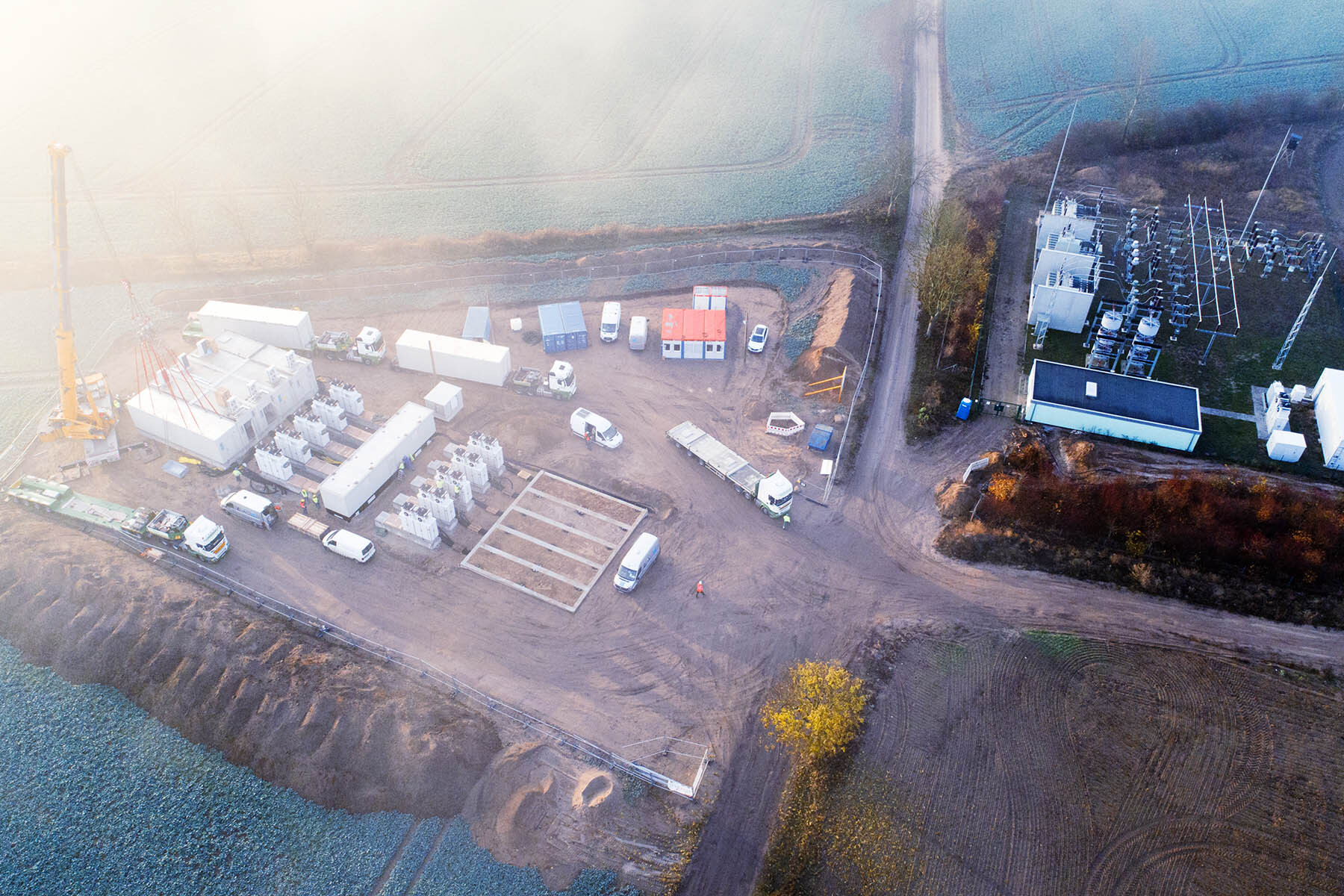Case study
Cremzow

The Challenges
As more and more intermittent sources of renewable energy such as wind and solar are introduced to the grid, operators are finding it increasingly difficult to maintain the stability of the electrical system. When wind speeds and solar radiation fluctuate, other sources of generation and/or load must respond quickly to make up the difference and maintain system balance.
One key metric for measuring the quality of an electricity supply system and how well it is reacting to these fluctuations is frequency stability, which reflects the balance between supply and demand on the grid. Frequency regulation is critically important for maintaining frequency stability, ensuring that the balance stays within safe operating boundaries.
To assist them with maintaining frequency stability many system operators source frequency regulation services from the market. The most rapidly reacting frequency regulation service is known as Primary Control Reserve (PCR). A Battery Energy Storage System (BESS) is an ideal PCR asset as it is able to provide frequency regulation services in both directions in just milliseconds owing to its ability to serve as both a load and a source of energy.
The Solution
In Cremzow, a small municipality in northeast Germany where there is a heavy concentration of wind turbines, Leclanche has completed a 30.6 MW / 34.8 MWh BESS to provide frequency regulation services. The Cremzow project, which was installed and commissioned in sections over a 6-month period, is jointly owned via an SPV by Enel Green Power (90%) and Enertrag (10%), the operator of the wind farm that surrounds the project site.
Leclanche’s turnkey EPC solution is unique in design, featuring concrete containers that greatly reduce the system’s footprint and maximize security (an ideal solution for projects in urban areas). The BESS consists of 10 separate storage units, all independently designed and controlled, which allows for maximum flexibility and redundancy. The BESS also includes all inverters, transformers, and switchgear, as well as an advanced energy management and control system that allows the system to meet the rigorous demands of frequency regulation and optimize the project’s economic returns over its 20-year life.
Location: Cremzow, Germany
- Size: 30.6 MW / 34.8 MWh
- Application: Primary grid frequency regulation
- Status: In operations
- COD: Q2 2019
- Scope: Turn-key EPC contract
Other case studies
-
Graciosa is an island of 4,500 inhabitants in the Atlantic Ocean that is part of the Portuguese Azores, 1,600 km away from the Portuguese mainland.
-
Leclanché Energy Storage Systems were selected to power the world’s largest electric ferry, the E-ferry. With a 4.3MWh capacity, the E-ferry sets a new benchmark in marine propulsion applications.